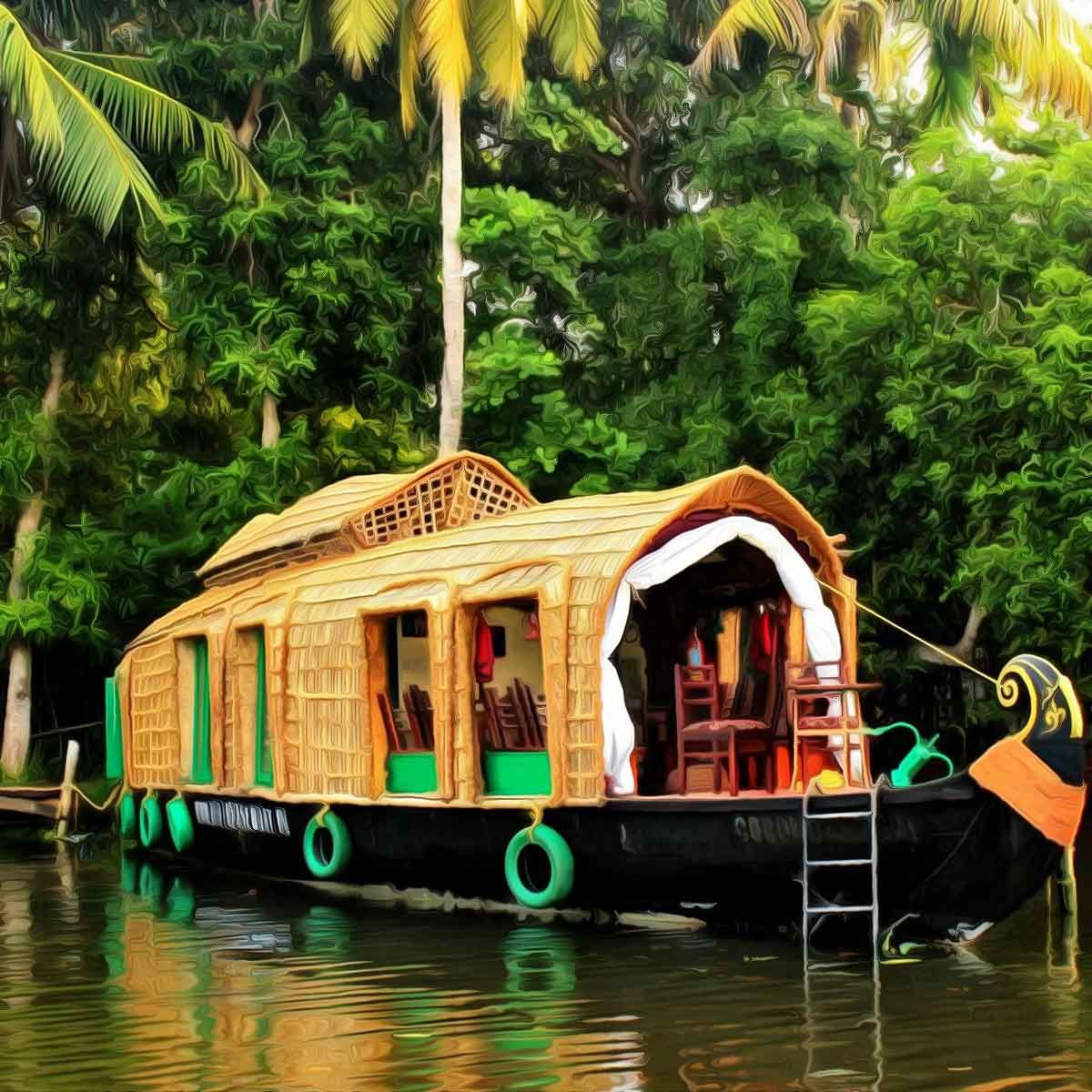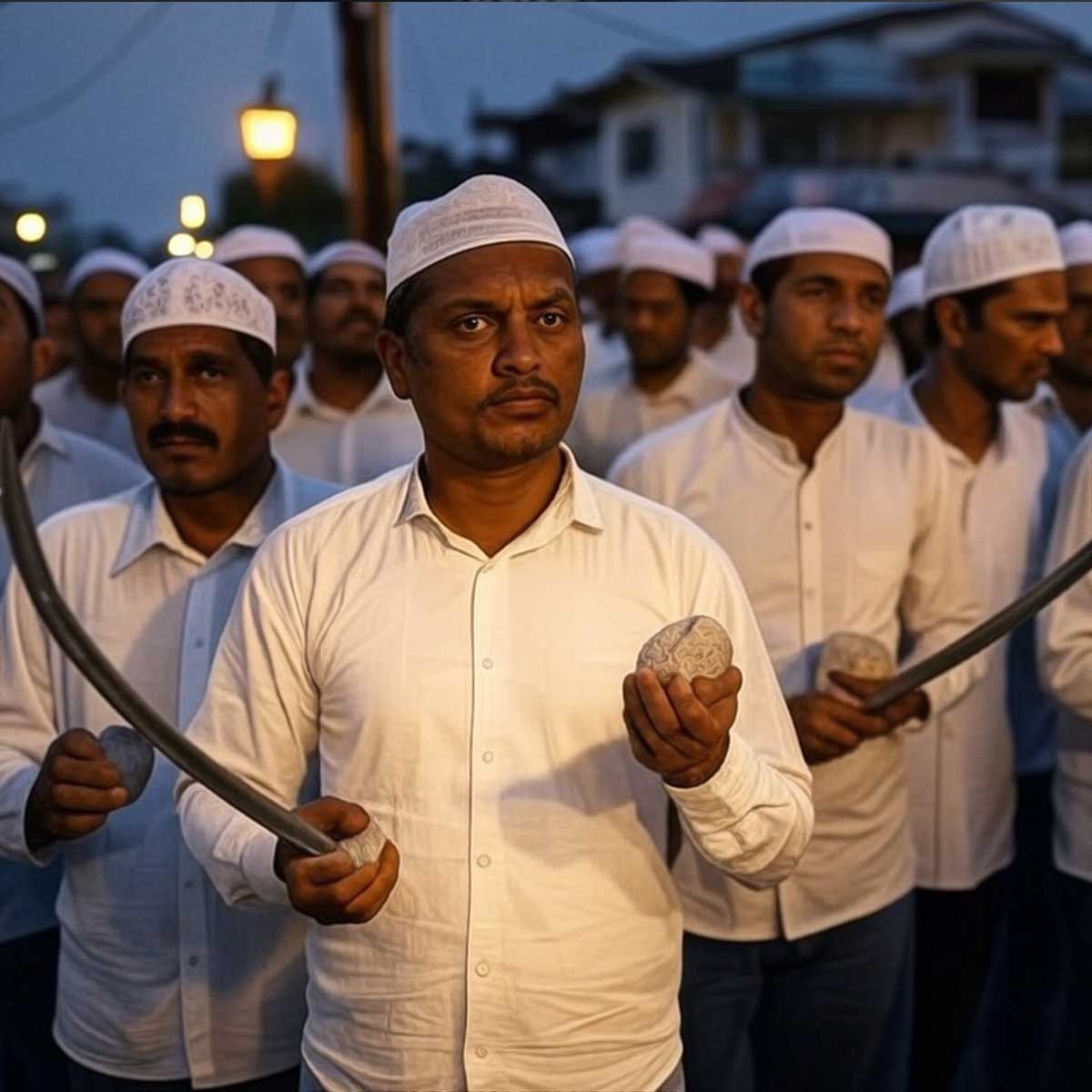More Coverage
Twitter Coverage
Satyaagrah
Written on
Satyaagrah
Written on
Satyaagrah
Written on
Satyaagrah
Written on
Satyaagrah
Written on
JOIN SATYAAGRAH SOCIAL MEDIA
“Kerala is superbly seen from a saddle, or with a paddle. No hour of life is wasted there”: Alleppey, also known as Alappuzha, a picturesque town of #Kerala famous for its backwaters and serene beauty has fascinated tourists for its floating houses

Alleppey, also known as Alappuzha, is a picturesque town located in the southern state of Kerala, India. Famous for its backwaters and serene natural beauty, Alleppey is home to a unique form of architecture that has fascinated locals and tourists alike—the floating houses.
These distinctive structures, also known as "kettuvallams," offer a captivating blend of tradition and innovation, showcasing the ingenious design techniques and the rich cultural heritage of the region. In this article, we will delve into the history, construction, and significance of the floating houses of Alleppey, highlighting their contribution to sustainable tourism and the preservation of Kerala's architectural legacy.
- Historical Context:
The origin of floating houses in Alleppey can be traced back to the early days of the region's history. Originally designed as traditional rice barges used for the transportation of goods, these vessels played a vital role in the local economy. Over time, as the need for these barges diminished, the local communities began converting them into houseboats—a creative solution that transformed them into floating dwellings, catering to the burgeoning tourism industry in the backwaters.
|
- Construction Techniques:
a. Architecture and Design: Floating houses in Alleppey are primarily constructed using locally available materials such as bamboo poles, coir ropes, and wooden planks. The houses are typically single-story structures with a thatched roof made of dried palm leaves or reeds. The traditional craftsmanship is evident in the intricate carvings and vibrant paintings that adorn the exteriors, reflecting the artistic heritage of Kerala.
b. Foundation and Buoyancy: The foundation of these houses is built upon hollow cylindrical barrels or drums made from bamboo and sealed with resin to ensure buoyancy. These barrels provide the necessary stability and enable the houseboats to float effortlessly on the backwaters. Additionally, wooden logs or planks are strategically positioned to distribute the weight evenly and maintain balance.
c. Sustainable Practices: The construction of floating houses in Alleppey embraces sustainable practices. Bamboo, being a fast-growing and renewable resource, is extensively used for the framework, ensuring minimal ecological impact. The use of coir ropes, derived from coconut husks, not only provides strength but also promotes the livelihood of local coir artisans.
- Life on a Floating House:
Living on a floating house in Alleppey offers a unique experience that is deeply connected to the local culture and ecosystem. The interior spaces of these houses are carefully designed to provide comfort and convenience to residents and tourists. The houseboats are equipped with bedrooms, bathrooms, a kitchen, and a living area, often featuring modern amenities like air conditioning and Wi-Fi connectivity.
- Sustainable Tourism and Economic Impact:
The floating houses of Alleppey have played a significant role in promoting sustainable tourism in the region. They offer an immersive experience, allowing visitors to witness the enchanting backwaters, experience the local way of life, and appreciate the biodiversity of the region. The popularity of these houseboats has created employment opportunities for local communities, including boat operators, chefs, and maintenance staff, thereby contributing to the socio-economic development of the area.
- Challenges and Conservation Efforts:
While the floating houses have become an iconic symbol of Alleppey, they also face challenges related to environmental conservation. Issues such as water pollution, waste management, and overcrowding in certain areas require continuous monitoring and sustainable solutions. To address these concerns, initiatives have been undertaken by the local authorities, including the introduction of eco-friendly measures such as waste treatment plants, strict regulations on the number of houseboats, and awareness campaigns promoting responsible tourism.
|
History of floating houses in Alleppey
The history of floating houses in Alleppey, Kerala can be traced back several centuries and is deeply intertwined with the region's unique geography, culture, and economic activities. These floating houses, locally known as "kettuvallam," have served as a vital part of the region's transportation, trade, and tourism industries.
The concept of floating houses in Alleppey can be traced back to the traditional rice barges or "kettuvallams" that were used for transporting rice and other goods through the intricate network of backwaters and canals in the region. These rice barges were initially made entirely of wood and were an integral part of the agricultural economy, transporting rice and other produce from the paddy fields to the markets.
Over time, with the advent of modern transportation and the decline in the rice trade, the importance of these traditional rice barges diminished. However, recognizing their potential for tourism, the government and local entrepreneurs began converting these barges into houseboats to offer a unique and unforgettable experience to visitors exploring the serene backwaters of Alleppey.
The transformation of the traditional rice barges into floating houses involved extensive renovations and modifications. The wooden hulls were strengthened, and the cargo holds were converted into comfortable living spaces. These houseboats were equipped with basic amenities such as bedrooms, bathrooms, a kitchen, and a deck area for passengers to enjoy the scenic beauty of the backwaters.
In the early days, these floating houses primarily catered to domestic tourists who sought a tranquil escape in the lap of nature. However, with the increasing popularity of Kerala as a tourist destination, especially among international travelers, the demand for houseboat experiences soared. This led to further improvements and enhancements in the design and facilities of the floating houses, making them more luxurious and appealing to a wider range of visitors.
|
The government of Kerala, recognizing the potential of houseboats as a significant tourist attraction, implemented various regulations and guidelines to ensure the safety and quality of the floating houses. These regulations cover aspects such as licensing, safety standards, waste management, and environmental sustainability.
Today, floating houses in Alleppey have become synonymous with the backwater tourism industry in Kerala. The region attracts thousands of tourists every year who come to experience the unique charm of staying in a houseboat and cruising through the tranquil backwaters, surrounded by lush greenery, coconut palms, and an abundance of birdlife.
Floating houses have not only contributed to the tourism sector but also to the local economy. They have created employment opportunities for boat builders, crew members, and local artisans involved in the maintenance and renovation of these houseboats. Moreover, the revenue generated from tourism has had a positive impact on the livelihoods of the local communities living along the backwaters.
In recent years, efforts have been made to promote sustainable and eco-friendly practices in the operation of floating houses. Measures such as waste management, solar power installations, and the use of eco-friendly materials are being adopted to minimize the environmental impact of tourism in the backwaters.
The history of floating houses in Alleppey, Kerala, is a testament to the region's ability to adapt and evolve with changing times. From being utilitarian rice barges to luxurious and comfortable houseboats, these floating houses continue to captivate the imagination of travelers, offering a glimpse into the rich cultural heritage and natural beauty of Kerala's backwaters.
Conclusion:
The floating houses of Alleppey exemplify the harmonious coexistence between humans
|
 Support Us
Support Us
Satyagraha was born from the heart of our land, with an undying aim to unveil the true essence of Bharat. It seeks to illuminate the hidden tales of our valiant freedom fighters and the rich chronicles that haven't yet sung their complete melody in the mainstream.
While platforms like NDTV and 'The Wire' effortlessly garner funds under the banner of safeguarding democracy, we at Satyagraha walk a different path. Our strength and resonance come from you. In this journey to weave a stronger Bharat, every little contribution amplifies our voice. Let's come together, contribute as you can, and champion the true spirit of our nation.
 |  |  |
| ICICI Bank of Satyaagrah | Razorpay Bank of Satyaagrah | PayPal Bank of Satyaagrah - For International Payments |
If all above doesn't work, then try the LINK below:
Please share the article on other platforms
DISCLAIMER: The author is solely responsible for the views expressed in this article. The author carries the responsibility for citing and/or licensing of images utilized within the text. The website also frequently uses non-commercial images for representational purposes only in line with the article. We are not responsible for the authenticity of such images. If some images have a copyright issue, we request the person/entity to contact us at satyaagrahindia@gmail.com and we will take the necessary actions to resolve the issue.
Related Articles
- "The Kerala Story 2.0": In a trend that's both provocative and poignant, reels showing Muslim girls removing bindis from Hindu classmates and making them wear hijabs going viral, highlighting urgent discussions on identity, coercion, and cultural norms
- “An animal’s eyes have the power to speak a great language”: Rare Himalayan Lynx found in Ladakh region of India, they occur throughout northern slopes of Himalayas and has been reported both from thick scrub woodland & barren, rocky areas above tree line
- Land Jihad being carried out by Waqf Board much more dangerous than Love Jihad; Hindus need to fight this
- Insane utterances of Islamic preachers in Kerala from 'Satan entering the body if don’t chant ‘Bismi’ while having sex' to 'women having big breasts in paradise'
- "Aur kab tak - Golden Via Kochi Horror Saga": Ajumon and Majeed deceptively sold and transported two Kerala women Rekha and Usha to Arab families in Kuwait, where they were locked up, abused, starved, tortured, and physically assaulted, finally rescued
- “A river seems like a magic thing, moving, living part of the earth itself”: India to gain a huge boost in inland water transportation by launching the world's Longest River Cruise, MV Ganga Vilas, sailing from Varanasi to Dibrugarh across 27 river system
- "The reward for work well done is the opportunity to do more": Patayat Sahu, from Kalahandi spent his entire life making an astonishing garden of 3000 medicinal plants and catalogued them in two illustrated volumes, this year’s recipient of Padma Shri
- "Everything depends on this: a fathomless sinking into a fathomless nothingness": Joshimath sinking - 10 crore people visit Uttarakhand a year, how much can it take say experts, Nainital, Mussoorie, Dharchula and several towns could face similar disaster
- "Haleluiah": In Kerala, Sibin, Ebin, and Justin from Kasargod arrested for using AI to create and distribute nude images of 150 women, including churchgoers, after stealing pictures of females from their village and surrounding areas from social media
- “If it looks like a duck, quacks like a duck, it's a duck”: Mandarin duck is considered one of the most beautiful birds in the world, this is because of its stunning plumage, which is made up of an array of colors that you can't help but notice them
- “If you would know strength & patience, welcome the company of trees”: “Trees for Wealth” - first-of-its-kind movement to bring about a revolution in the local economy & has envisioned State as the ‘Fruit Hub of India' by planting 1 billion fruit trees
- "Symbols are powerful because they are the visible signs of invisible realities": Real Sindoor comes from a tree, a low-height tree that finds mention in our scriptures. Seeds from the tree are crushed to make fine powder and were used by Sita and Hanuman
- Kerala High Court slams state govt’s over 80% minority scholarship quota for Muslims, says legally not sustainable: Details
- "Each species is a masterpiece, a creation assembled with extreme care & genius": Ghost of the mountains | Snow Leopard, one of the most agile hunters on earth is an elusive mammal species of cat family, top-predator of Central Asia & Indian Himalaya
- Sree Padmanabhaswamy temple - an architectural miracle




























